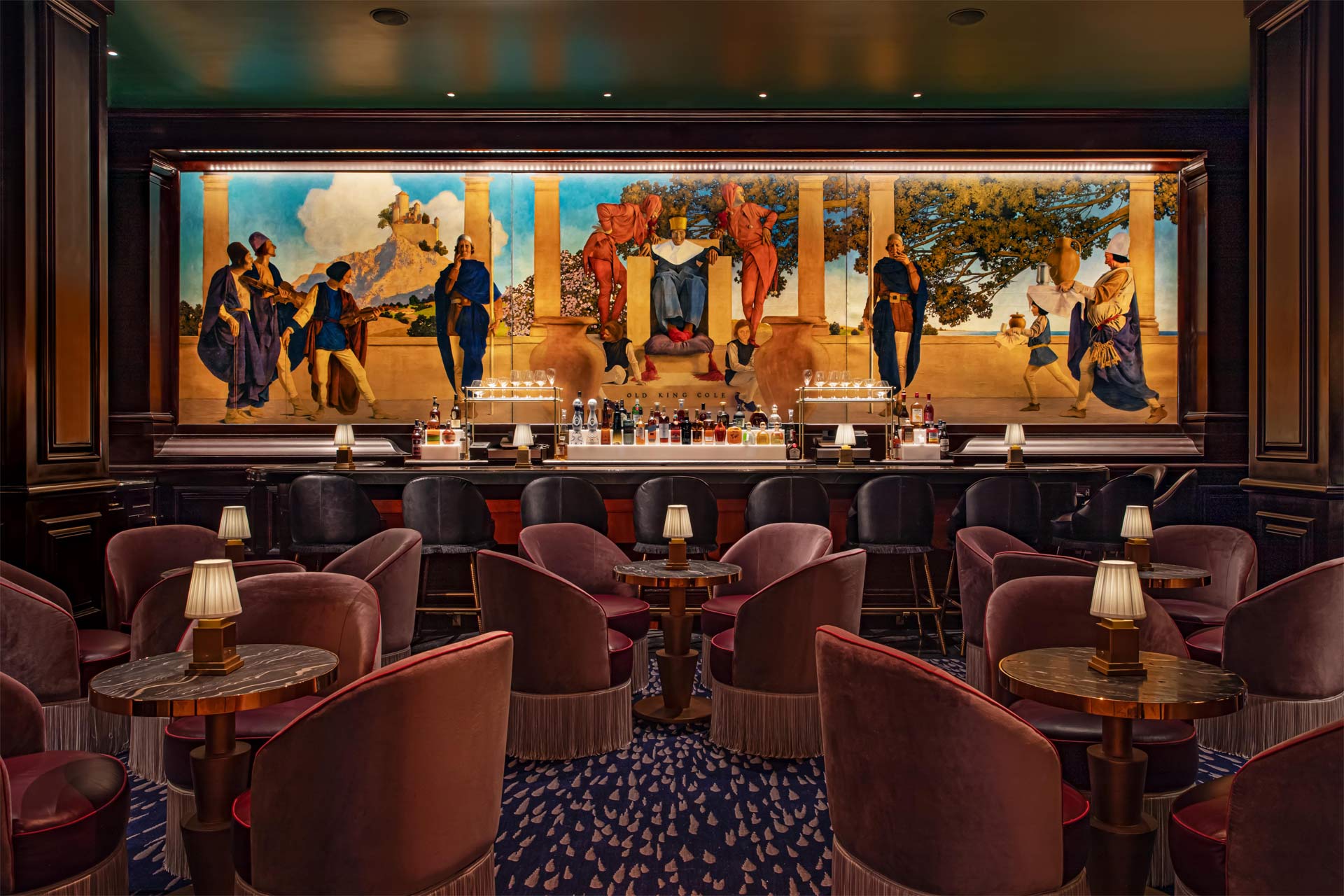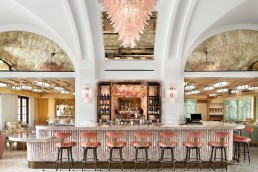As 2025 approaches, Champalimaud Design reflects on the evolving interior design landscape, offering insights and predictions for the year ahead.
Wellness Redefined
The wellness industry is booming, worth an estimated $1.8 trillion in January 2024, according to a report by McKinsey & Co, reflecting a growing interest in health and a desire for thoughtful, effective and elevated offerings, with design playing a key role in enhancing this experience.
Wellness-driven design has always been integral to Champalimaud Design – in recent years, the studio has noted a shift from wellness being spotlighted solely in the likes of a gym or spa, to becoming integrated into each element of a space.
Matoula Karagiannis, Principal at Champalimaud Design, explains: “There isn’t one conversation that doesn’t evolve around wellness, and it’s part of the experience now. Where it used to be a segregated activity, it’s now touching all the senses – food, air quality and wellbeing.”
The sentiment is echoed by Kajsa Krause, Principal and Director of Strategy: “Wellness has become a driving factor in residential and hospitality projects at the high end, and guests are expecting more than the typical pool and gym. They want an elevated and personalised experience. Designs should be layered and appeal to visitors’ ranging desires, from invigorating and active to restorative and pampering. Attentive and thoughtful designs have to be matched with a high level of service to create true luxury.”
This approach is evident in projects such as The St Regis New York, where the studio opted for open layouts, custom biophilic wallcoverings and enhanced natural light to foster a serene guest experience.
The team’s attention to sensory engagement aligns with Karagiannis’ observation that “handcrafted, warm, emotional touches are appearing more in design. It’s a lot less clinical, with wood and layered textures creating a calm and serene atmosphere.” Kajsa also notes how biophilic design “fits particularly well in the wellness space, as it has a direct impact on physical wellbeing, enhancing visitors’ connection to nature, promoting productivity, and reducing stress.”

The Role of Art: Sourcing, Integration and Market Value
The role of art in interior design reflects a dynamic shift toward storytelling and contextual relevance. At L’Ermitage Beverly Hills, the team collaborated with art dealer Christina von Schilling to source vibrant, contemporary works, aligning the project with its locale. Karagiannis notes that “art selection is a hugely collaborative process, for the context of L’Ermitage it was important for us to work with emerging California artists to achieve our desired effect.”
Principal Courtney Brannan also adds: “considered artwork creates more cohesion with the design scheme”. At the St Regis New York, art plays a dual role in preserving legacy while also introducing modern appeal. In the public areas, the studio has utilised existing artwork, Brannan reveals, balancing this with contemporary pieces “to create a sophisticated and marketable aesthetic”.

Eco-Conscious and Timeless Design
Client demands for eco-conscious design have led to significant innovations in materials, methods and sourcing practices across Champalimaud Design’s projects and in the wider industry. These principles are exemplified in the Champalimaud Collection, developed in partnership with Holland & Sherry. As founder Alexandra Champalimaud notes: “We have taken inspiration from our work around the globe to evolve classic indoor textures that are authentic and resilient, and with the purity to elevate a space.” A second collection of performance outdoor offerings will be revealed in early 2025, inspired by the charm of traditional woven blankets from the Alentejo region of Portugal.
The studio’s innovations extend beyond materials to include efforts to reduce reliance on energy-intensive materials like concrete and to integrate solar panels where feasible.
Pairing Playful with Neutral
Champalimaud Design’s approach to colour reflects a thoughtful balance of boldness, practicality, and storytelling. The Silver Palm Bar at The Ritz-Carlton, Grand Cayman, for instance, sees the use of jewel-toned palettes – emerald greens and deep golds were selected to evoke the island’s lush landscapes while adding a sophisticated ambiance.
At L’Ermitage Beverly Hills, the studio played with a clean and natural palette, with earthy tones and persimmon predominating in the restaurant and tonal greens in the Green Room; these biophillic-inspired tones are detail that Principal Jun Chun anticipates will continue to dominate in 2025.
In public spaces, vibrant tones like reds, oranges and purples are used strategically, reveals Partner Winston Kong, explaining how “these shades, particularly in carpets, add depth and hide wear in high-traffic areas”. To ensure palette choices do not become dated Winston also emphasises the “need for tonal differences between colours”. This layered approach ensures that colour enhances both functionality and design impact.

The Influence of Location and Heritage
The Principals at Champalimaud Design continue to draw inspiration from travel, culture, location and heritage, which shape design processes in a way that reflects the unique context of each project. At L’Ermitage Beverly Hills, Karagiannis reveals that “the local environment, paired with California’s natural beauty, guided the design process, blending residential sophistication with a sense of organic luxury.”
Kong meanwhile shares observations from his latest projects in Asia. “As Asian lifestyles become more integrated with Western culture, there’s a growing demand for kitchens that blend traditional and modern functionality,” he reveals, emphasising the importance of adapting global design trends to suit local contexts.
CREDITS
Photography: Header image © Arturo+Lauren Engel
Related Posts
18 December 2024
Inside Palm House, a new pink paradise in Palm Beach
11 December 2024



